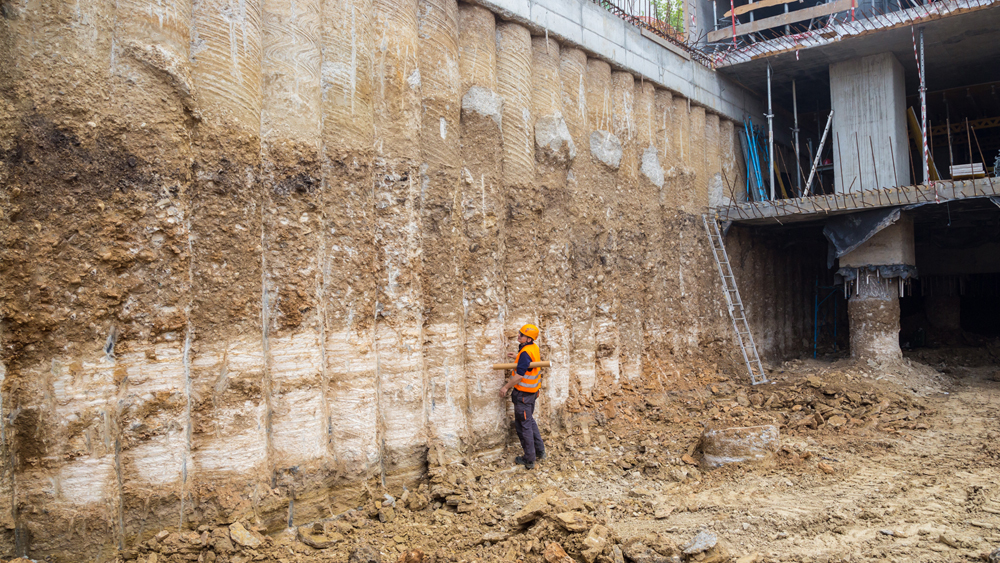Recognizing the Important Function of the Geotechnical Sector in Modern Building And Construction Projects and Infrastructure Advancement
The geotechnical market is a cornerstone of modern-day building and facilities advancement, supplying crucial insights into soil habits that straight influence task outcomes. With advanced soil evaluations and cutting-edge design options, geotechnical professionals not only make sure structural honesty however also address sustainability issues amidst advancing ecological standards.
Value of Soil Assessment
Dirt assessment plays an essential role in the geotechnical industry, working as the structure for notified decision-making in construction jobs. Exact soil evaluation is essential for determining the suitability of a site for various sorts of structures, consisting of household homes, industrial buildings, and bridges. By examining soil structure, density, strength, and wetness content, designers can anticipate prospective obstacles and reduce risks linked with ground instability, disintegration, and settlement.
The evaluation process generally involves a series of examinations and observations that offer vital information regarding the subsurface conditions. This data informs the design and construction processes, making sure that frameworks are improved solid ground with adequate support. Furthermore, understanding the dirt profile enables engineers to pick appropriate building and construction methods and materials, maximizing resource usage and reducing prices.
Along with making certain architectural stability, soil evaluation adds to ecological sustainability. By determining potential contamination or unfavorable impacts on bordering communities, designers can execute techniques to shield these all-natural resources. Overall, complete dirt evaluation is essential in the geotechnical field, underpinning the security, performance, and environmental duty of construction jobs.
Trick Geotechnical Methods
A selection of essential geotechnical methods are employed to analyze and enhance the security and performance of building websites. One fundamental technique is soil tasting and screening, which permits engineers to determine the physical and chemical properties of the ground. This info is essential for making notified choices concerning structure layout and building approaches.
An additional important strategy is site characterization, which entails the detailed evaluation of dirt and rock conditions through approaches such as borehole drilling and in-situ screening. Strategies like Criterion Infiltration Tests (SPT) and Cone Penetration Examinations (CPT) provide important information on dirt strength and stratigraphy.
Ground enhancement techniques, such as dirt stabilization and grouting, are additionally essential in boosting the load-bearing ability of weak dirts. These techniques can reduce negotiation and improve general website problems.
In addition, slope security analysis is critical for identifying prospective landslide dangers and guaranteeing the safety of excavations. This analysis commonly employs mathematical modeling and restriction balance methods to anticipate soil actions under different problems.
Integrating these geotechnical strategies right into construction preparation not only optimizes job results however likewise makes certain the long-lasting sustainability of framework growth.
Effect On Building Safety And Security

Additionally, effective geotechnical engineering includes applying mitigation approaches for determined threats. This may consist of dirt stabilization methods, maintaining structures, or water drainage systems to ease hydrostatic stress. By attending to these factors, building teams can reduce the chance of accidents and enhance employee security.
In addition, continual monitoring of website problems is critical throughout building. Geotechnical tools can supply real-time data regarding ground movement and stability, permitting prompt treatments when essential.
Basically, the geotechnical industry plays a critical duty in safeguarding building tasks. By prioritizing ground stability and using strenuous assessment techniques, the geotechnical industry not just protects the labor force however additionally contributes to the long life and integrity of created infrastructure.
Sustainability in Geotechnical Practices

Furthermore, geotechnical designers are currently utilizing advanced technologies, such as geosynthetics, which boost dirt security while minimizing the volume of material required. This not only conserves sources however likewise leads to less waste generation (consulting engineer). The combination of lasting design concepts into geotechnical engineering encourages using eco-friendly energy resources in building processes, additionally minimizing carbon discharges
Furthermore, complete website evaluations are necessary for recognizing prospective environmental effects before construction starts. By conducting these evaluations, geotechnical experts can develop strategies that mitigate damaging effects, guaranteeing compliance with ecological policies. In general, the emphasis on sustainability within geotechnical techniques not just adds to the longevity and resilience of framework yet additionally promotes an accountable method to land and source administration. This dedication is essential for fostering sustainable growth in the modern-day building and construction landscape.
Future Trends in Geotechnical Design
Advancement is driving the future of geotechnical design, as emerging innovations and approaches improve the market. The integration of advanced data analytics and fabricated intelligence is established to change site examination and threat analysis, allowing designers to make even more educated decisions based on real-time information. The use of geosynthetic materials is obtaining grip, using sustainable options that improve dirt security and lower ecological effect - geotechnical engineers.
Another substantial trend is the adoption of automated and robotic systems for monitoring and building and construction processes. These innovations not only enhance precision however also enhance security by minimizing human participation in dangerous environments. Additionally, the application of Building Details Modeling (BIM) in geotechnical layout promotes enhanced partnership among stakeholders, optimizing job shipment and decreasing prices.
As climate modification positions brand-new difficulties, the market is significantly concentrating on resilience and adaptability in layout techniques, making certain infrastructure can hold up against severe weather occasions. Finally, the recurring fad toward sustainability will certainly drive innovation in eco-friendly materials and techniques, aligning geotechnical engineering with broader environmental objectives. Collectively, these patterns will certainly form an extra reliable, lasting, and resistant geotechnical landscape for future tasks.
Conclusion

The geotechnical industry is a keystone of modern building and framework advancement, giving important understandings into soil habits that directly affect project results. engineer of record.Dirt evaluation plays an important duty in the geotechnical industry, offering as the structure for educated decision-making in construction tasks. In general, comprehensive soil assessment is crucial in the geotechnical area, underpinning the safety, efficiency, and environmental duty of construction projects
Building security is significantly affected by geotechnical techniques, as the security and honesty of the ground directly engineer of record affect the total safety and security of a construction website.In final thought, the geotechnical industry is important in contemporary building and facilities development, giving essential evaluations that guarantee architectural integrity and security.
Comments on “Secret Skills Every Geo Tech Engineer Requirements for Effective Website Analysis”